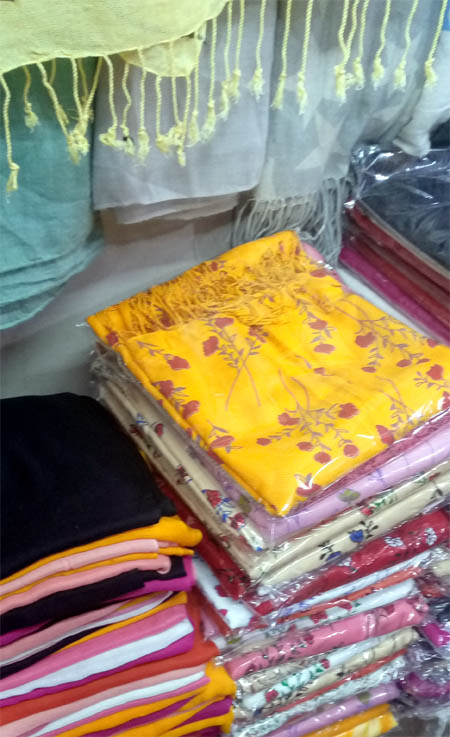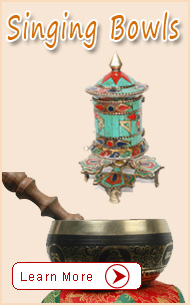


Discover Nepal's Pashmina Exports Industry


Here We Go
The history of Nepal Pashmina exports industry dates back to the 17th century when the ancient trade route called the Silk Road connected the Middle East, India, Afghanistan, and Nepal. The trade of pashmina, a fine cashmere wool, began in Nepal when traders from the Middle East and India brought the wool to Nepal. This trade was centered in the Kathmandu Valley, where the first pashmina weavers were hired by the royalty.
By the late 18th century, pashmina shawls had become a status symbol in Europe, sparking a demand for the luxurious material. The pashmina industry in Nepal began to flourish in the mid-20th century, when the government began to promote the production and export of the material.
By the 1970s, the Nepalese pashmina industry had become the largest in the world, with exports accounting for 40 percent of the country’s total exports. This success was due in part to the increasing popularity of the material, which was being exported to countries all over the world.
In the 1990s, Nepal's pashmina industry started to decline due to competition from India and China. In response, the Nepalese government established a quality control board to ensure that only high-quality pashmina was exported. This quality control system, combined with the country’s unique production methods, allowed the industry to remain competitive.
Today, Nepal is still one of the world’s leading exporters of pashmina. The industry has become an important source of income for the Nepalese people, with over 200,000 people employed in the sector. In addition, pashmina exports have helped to boost the country’s economy, with exports accounting for about 2 percent of Nepal’s gross domestic product.
Nepal is renowned for its exquisite pashmina exports industry. This industry has been around for centuries, and is a major contributor to the country's economy. Pashmina is a type of fine cashmere wool, which is hand-spun and woven into luxurious wraps, shawls, and scarves. These items are highly sought after around the world for their luxurious feel and elegant look. The process of making pashmina exports is labor intensive and involves many steps. First, the wool is carefully hand-spun by the weavers. This is done using traditional spinning wheels, which have been used in Nepal for centuries. Once the wool is spun, it is then dyed using natural dyes such as indigo, saffron, and turmeric. After dyeing, the wool is then woven into intricately patterned fabrics. The pashmina exports industry in Nepal is highly regulated and ensures that only the highest quality products are produced. The industry is regulated by the Nepal Pashmina Board, which monitors the production of pashmina and ensures that the wool is of the highest quality. The Nepal Pashmina Board also works to promote and sustain the industry by providing education and training to the weavers and producers. Nepal Pashmina exports are in high demand around the world and are highly sought after for their luxurious feel and exquisite look. The products produced by Nepal's pashmina exports industry are of the highest quality and are perfect for those looking for something special and unique.
What Should Nepal Garments Industry Do To Expand It's world class designer Fashion Dresses Products To Foreign Nations?
1. Promote Nepali Pashmina Products Internationally: Nepal should promote its pashmina products in international markets and create an international presence. This can be done through trade shows, international fairs, and other events that showcase Nepali products.
2. Develop a Pashmina Brand Image: Nepal should develop a strong brand image for its pashmina products. This can be done through campaigns and advertising that showcase the quality and craftsmanship of Nepali pashmina.
3. Create Design Innovations: Nepal should create innovative designs that appeal to international customers. This can be done by partnering with international designers and utilizing new technologies to create unique designs.
4. Improve Supply Chain Efficiency: Nepal should focus on improving the efficiency of its supply chain to ensure that customers receive their orders quickly and reliably. This can be done through better inventory management, faster delivery services, and improved customer service.
5. Develop Quality Assurance Standards: Nepal should develop quality assurance standards for its pashmina products. This can be done by setting stringent quality control measures and monitoring the production process to ensure that only the highest quality products are being produced.
Major pashmina products exported in international markets include pashmina shawls, wraps, stoles, scarves, sweaters, and jackets. Pashmina products are sought-after in the international market for their luxurious feel and quality. They are popular as fashion accessories, home décor items, and gifts. They are also used in religious ceremonies and special events. Other popular pashmina products include pashmina blankets, pashmina throws, pashmina bedspreads, and pashmina pillow covers.
Nepal Art Shop Export & Import P Ltd is helping to enhance Nepal made Pashmina by providing access to a global market. Pashmina is a fine, light cashmere wool that is produced in Nepal. This wool is used in the production of traditional Nepalese shawls, scarves, and other garments. By exporting these products, Nepal Art Shop Export & Import P Ltd is helping to promote the traditional Nepalese craftsmanship and culture and providing a source of income for many of the artisans and small businesses involved in the production process. Additionally, they are helping to raise awareness of the beauty and quality of this unique material, allowing more people to appreciate the craftsmanship and culture of Nepal.
For Wholesale Nepal Pashmina Products made in Nepal to buy take a look left menu .
Email: nepalartshop@gmail.com | Whatsapp: 977 9860937940
The history of Nepal Pashmina exports industry dates back to the 17th century when the ancient trade route called the Silk Road connected the Middle East, India, Afghanistan, and Nepal. The trade of pashmina, a fine cashmere wool, began in Nepal when traders from the Middle East and India brought the wool to Nepal. This trade was centered in the Kathmandu Valley, where the first pashmina weavers were hired by the royalty.
By the late 18th century, pashmina shawls had become a status symbol in Europe, sparking a demand for the luxurious material. The pashmina industry in Nepal began to flourish in the mid-20th century, when the government began to promote the production and export of the material.
By the 1970s, the Nepalese pashmina industry had become the largest in the world, with exports accounting for 40 percent of the country’s total exports. This success was due in part to the increasing popularity of the material, which was being exported to countries all over the world.
In the 1990s, Nepal's pashmina industry started to decline due to competition from India and China. In response, the Nepalese government established a quality control board to ensure that only high-quality pashmina was exported. This quality control system, combined with the country’s unique production methods, allowed the industry to remain competitive.
Today, Nepal is still one of the world’s leading exporters of pashmina. The industry has become an important source of income for the Nepalese people, with over 200,000 people employed in the sector. In addition, pashmina exports have helped to boost the country’s economy, with exports accounting for about 2 percent of Nepal’s gross domestic product.
Nepal is renowned for its exquisite pashmina exports industry. This industry has been around for centuries, and is a major contributor to the country's economy. Pashmina is a type of fine cashmere wool, which is hand-spun and woven into luxurious wraps, shawls, and scarves. These items are highly sought after around the world for their luxurious feel and elegant look. The process of making pashmina exports is labor intensive and involves many steps. First, the wool is carefully hand-spun by the weavers. This is done using traditional spinning wheels, which have been used in Nepal for centuries. Once the wool is spun, it is then dyed using natural dyes such as indigo, saffron, and turmeric. After dyeing, the wool is then woven into intricately patterned fabrics. The pashmina exports industry in Nepal is highly regulated and ensures that only the highest quality products are produced. The industry is regulated by the Nepal Pashmina Board, which monitors the production of pashmina and ensures that the wool is of the highest quality. The Nepal Pashmina Board also works to promote and sustain the industry by providing education and training to the weavers and producers. Nepal Pashmina exports are in high demand around the world and are highly sought after for their luxurious feel and exquisite look. The products produced by Nepal's pashmina exports industry are of the highest quality and are perfect for those looking for something special and unique.
What Should Nepal Garments Industry Do To Expand It's world class designer Fashion Dresses Products To Foreign Nations?
1. Promote Nepali Pashmina Products Internationally: Nepal should promote its pashmina products in international markets and create an international presence. This can be done through trade shows, international fairs, and other events that showcase Nepali products.
2. Develop a Pashmina Brand Image: Nepal should develop a strong brand image for its pashmina products. This can be done through campaigns and advertising that showcase the quality and craftsmanship of Nepali pashmina.
3. Create Design Innovations: Nepal should create innovative designs that appeal to international customers. This can be done by partnering with international designers and utilizing new technologies to create unique designs.
4. Improve Supply Chain Efficiency: Nepal should focus on improving the efficiency of its supply chain to ensure that customers receive their orders quickly and reliably. This can be done through better inventory management, faster delivery services, and improved customer service.
5. Develop Quality Assurance Standards: Nepal should develop quality assurance standards for its pashmina products. This can be done by setting stringent quality control measures and monitoring the production process to ensure that only the highest quality products are being produced.
Major pashmina products exported in international markets include pashmina shawls, wraps, stoles, scarves, sweaters, and jackets. Pashmina products are sought-after in the international market for their luxurious feel and quality. They are popular as fashion accessories, home décor items, and gifts. They are also used in religious ceremonies and special events. Other popular pashmina products include pashmina blankets, pashmina throws, pashmina bedspreads, and pashmina pillow covers.
Nepal Art Shop Export & Import P Ltd is helping to enhance Nepal made Pashmina by providing access to a global market. Pashmina is a fine, light cashmere wool that is produced in Nepal. This wool is used in the production of traditional Nepalese shawls, scarves, and other garments. By exporting these products, Nepal Art Shop Export & Import P Ltd is helping to promote the traditional Nepalese craftsmanship and culture and providing a source of income for many of the artisans and small businesses involved in the production process. Additionally, they are helping to raise awareness of the beauty and quality of this unique material, allowing more people to appreciate the craftsmanship and culture of Nepal.
For Wholesale Nepal Pashmina Products made in Nepal to buy take a look left menu .
Email: nepalartshop@gmail.com | Whatsapp: 977 9860937940
- Cras dictum. Maecenas ut turpis. In vitae erat ac orci dignissim eleifend.
- Pellentesque habitant morbi tristique senectus et netus et malesuada fames ac turpis egestas.
- Nunc quis justo. Sed vel ipsum in purus tincidunt pharetra.
- Nunc quis justo. Sed vel ipsum in purus tincidunt pharetra.

















